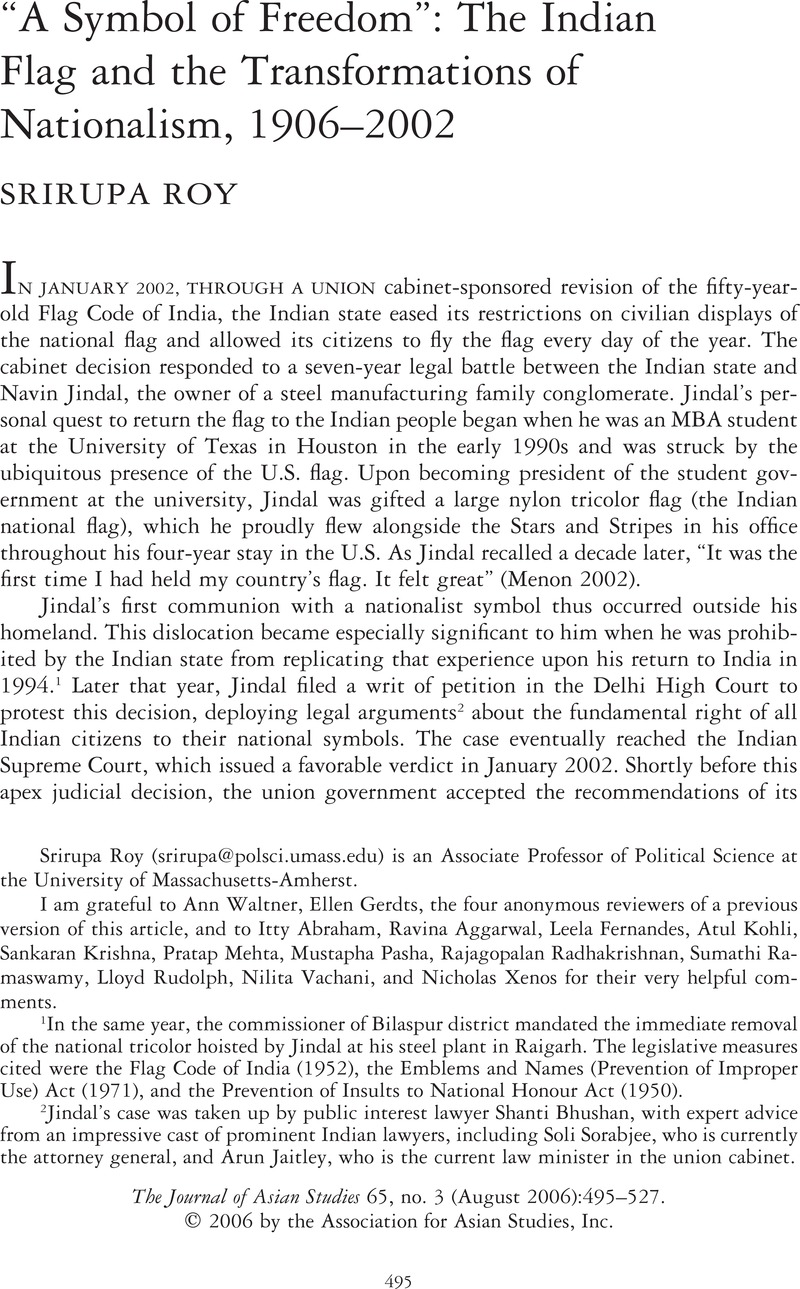Crossref Citations
This article has been cited by the following publications. This list is generated based on data provided by Crossref.
2010.
The Goddess and the Nation.
p.
117.
2010.
The Goddess and the Nation.
p.
283.
2010.
The Goddess and the Nation.
p.
177.
2010.
The Goddess and the Nation.
p.
13.
2010.
The Goddess and the Nation.
p.
151.
2010.
The Goddess and the Nation.
p.
237.
2010.
The Goddess and the Nation.
p.
73.
2010.
The Goddess and the Nation.
p.
353.
2010.
The Goddess and the Nation.
p.
301.
Vittorini, Simona
2014.
Two bullocks, a ladder and a lamp: electoral symbols in Nehruvian India.
Nations and Nationalism,
Vol. 20,
Issue. 2,
p.
297.
Brown, Lorraine
Richards, Steve
and
Jones, Ian
2014.
Sojourner perceptions of the St George Cross flag during the FIFA 2010 World Cup: A symbol of carnival or menace?.
International Review for the Sociology of Sport,
Vol. 49,
Issue. 1,
p.
102.
Lee, Yuen Ting
2015.
A Comparative Analysis of China and India: Ancient Patriarchy, Women’s Liberation, and Contemporary Gender Equity Education.
African and Asian Studies,
Vol. 14,
Issue. 1-2,
p.
134.
Elsner, Jaś
2020.
Empires of Faith in Late Antiquity.
Vecellio Segate, Riccardo
2021.
Flags, Color, and the Legal Narrative.
Vol. 1,
Issue. ,
p.
385.





